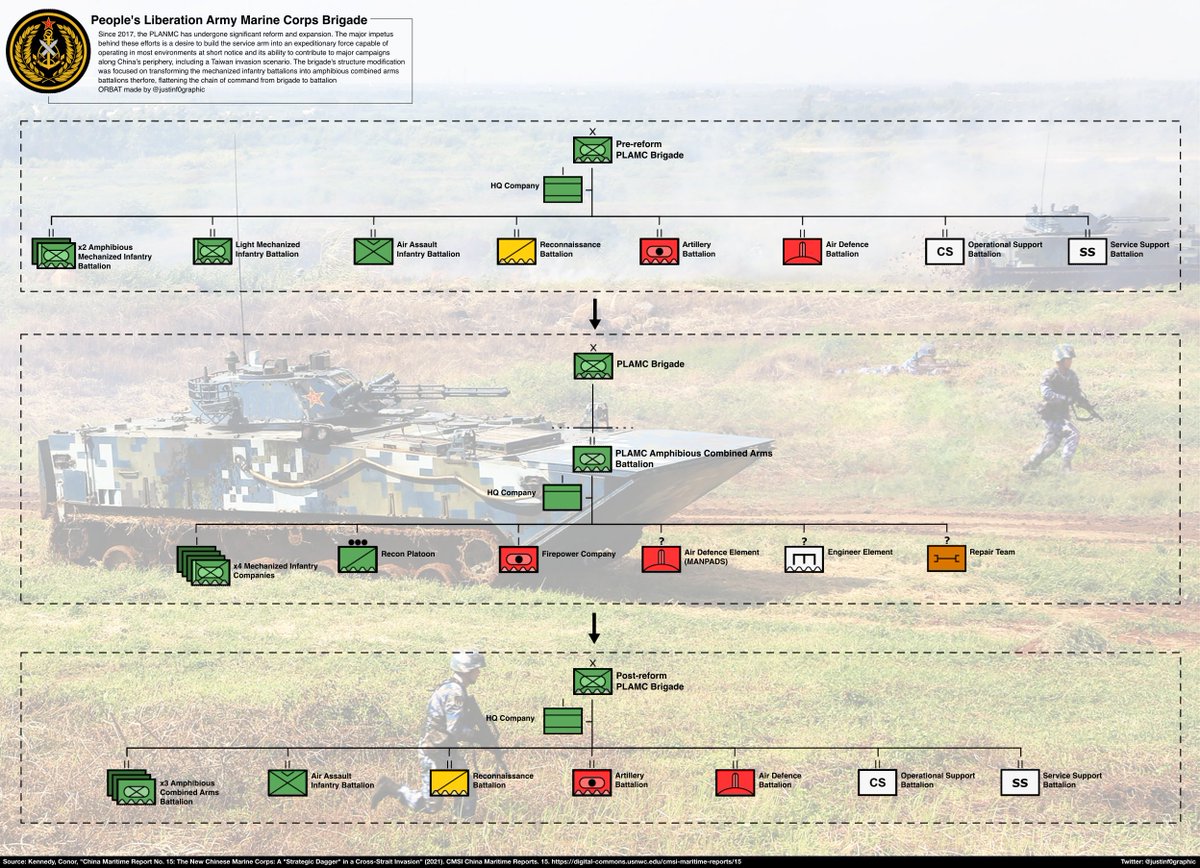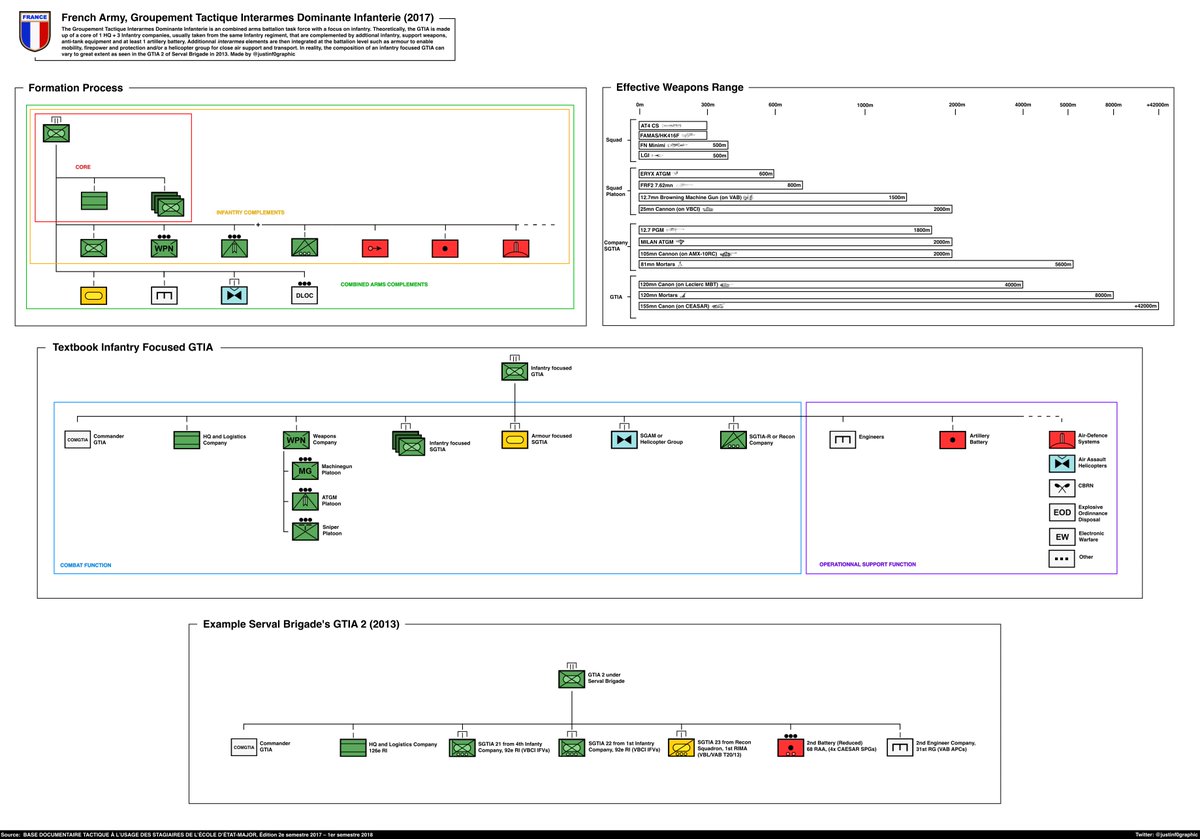1.In 2017, the PLA launched a wave of expansion and reform for its Marine Corps. The aim is to transform the PLAMC into an all-domain operation capable force able to deploy on short notice and maintain a high level of readiness 

2.The reforms are not made with only the Taiwan invasion scenario in mind but also China’s overseas interest. The PLAMC would play a dual role of securing China’s national interests abroad and assisting the PLAA’s amphibious forces in a cross-strait invasion 

3.The reform reorganized the brigade structure, mainly, replacing the mechanized infantry battalions with amphibious combined arms battalions 

4.Recon, Engineers, Firepower, and Air Defence were directly integrated into those combined arms battalions to enhance combat power, autonomy, and flexibility at the battalion level. 

5.It should be noted that PLAMC brigades are in the process of being reformed. The presented structure is, therefore, notional and each marine brigade has its variations and is subject to change in the near future 

6.Nevertheless, this change in the structure required the PLAMC to revamp the abilities of its battalion commanders, to improve coordination levels. It also launched training programs to increase the ability to lift forces over long distances and operate in different environments 

7. I’m a bit short on time so for more info, I recommend this report from @ChinaMaritime
digitalcommons.usnwc.edu/cgi/viewconten…
digitalcommons.usnwc.edu/cgi/viewconten…
• • •
Missing some Tweet in this thread? You can try to
force a refresh





















